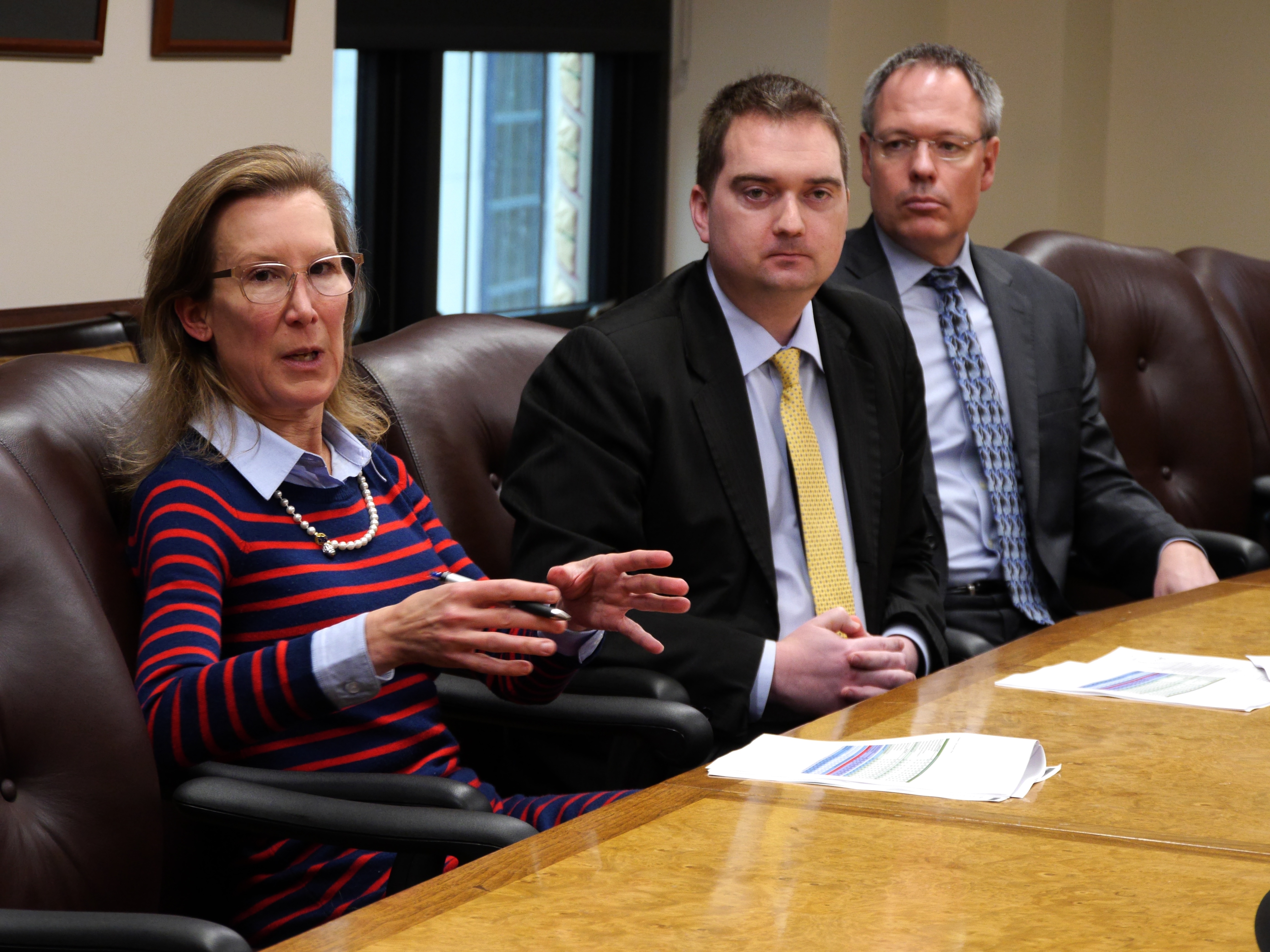
Gov. Mike Dunleavy’s office released the administration’s 10-year plan for state revenue and spending. The report comes out every year and usually doesn’t get much attention, but this year the governor’s budget advisers highlighted its importance. The House speaker says the message is ill-timed when leaders should be working together.
The plan looks at what the state would spend over the next 10 years if the Legislature adopts all of Dunleavy’s spending proposals — and if lawmakers and Alaskans amend the state constitution to limit spending.
It finds that spending in 2029 — not counting PFDs — would be $2.6 billion less than what it would be if spending continued to match inflation and population growth. Budget Director Donna Arduin said the governor’s approach is the best of four scenarios laid out in the report.
“They clearly show the stark contrast with what the governor’s proposed as a fiscal solution, compared to other alternatives that he’s not recommending,” she said.
The other alternatives would eliminate permanent fund dividends, spend all permanent fund earnings on government, or sharply raise taxes.
The report did not consider other alternatives, like reducing the growth of spending to a level between the governor’s plan and the total of inflation and population growth. It depends on the Legislature passing a series of significant legislative proposals from the governor that he hasn’t introduced yet.
And Dunleavy’s plan relies on spending reductions that face significant political opposition in the Legislature. Lawmakers have heard weeks of mostly negative reaction from Alaskans who would be affected by cuts proposed by the governor. Some of his proposals have been panned by lawmakers from both parties, including a plan to transfer oil property tax to the state that currently goes to municipalities.
Ed King, the administration’s top economist, said the full permanent fund dividends proposed by Dunleavy would have benefits, compared with spending on state services.
“Some people that feel those reductions more severely won’t be completely offset by the dividend payment, but when you look at the total state in aggregate, the positive effects of the permanent fund dividend being increased outweigh the negative effects of the government spending decreases,” he said.
House Speaker Bryce Edgmon said administration leaders highlighting the plan in a press conference is ill-timed. He said the legislative session is reaching a point when lawmakers and the administration should be working toward agreeing on a budget.
“The governor’s emphasis — from that conversation — continues to be on large reductions and on a full PFD, as well as backfilling the PFDs, which, you know, I don’t think that’s where the Legislature is in terms of making decisions on the upcoming budget,” Edgmon said.
Edgmon is a Dillingham resident who recently changed his registration from Democrat to independent. He noted that the Legislature is looking to make cuts, not make the constant budget increases that Dunleavy’s office contrasted with the governor’s plan.
“I think it’s looking way out into the future, whereas our focus today is working with the governor,” Edgmon said. “And we understand that we have health care and education costs and other things that are continuing to rise steadily, but if we’re going to reduce anything, that we have a responsible glide path — and not make major reductions all in one year.”
Representative Lance Pruitt is from Anchorage and is the leader of the minority-caucus Republicans in the House. He said the 10-year plan makes the importance of Dunleavy’s proposals clearer.
“If you’re going to look at the budget just in this year, you’re going to make very different decisions than if you look at the budget in the 10 year,” said Pruitt, whose wife, Mary Ann Pruitt, is Dunleavy’s communications director.
House finance subcommittees were finishing their work on Friday. The full House Finance Committee plans to consider the budget — and amendments to it — over the next two weeks.
Andrew Kitchenman is the state government and politics reporter for Alaska Public Media and KTOO in Juneau. Reach him at akitchenman@alaskapublic.org.




